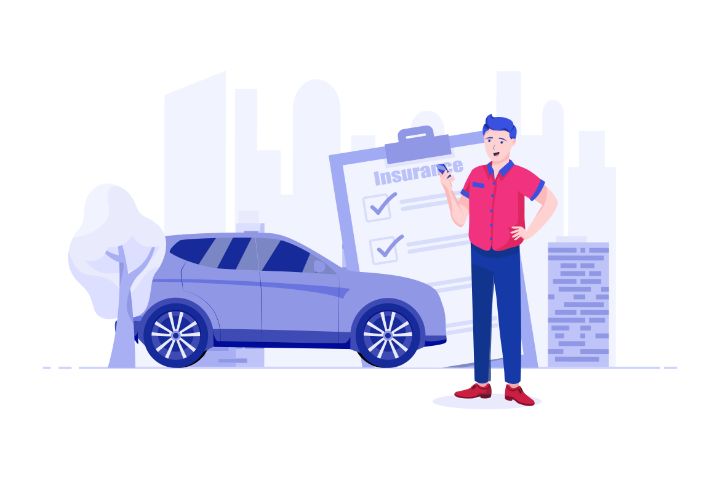Things to Know about the Components of Electric Cars
Things to Know about the Components of Electric Cars

Fuel prices are increasing by leaps and bounds and commuting short or long distances is becoming more expensive by the day. However, if you own an electric vehicle, you can comfortably commute to different places without burning a hole in your pocket. What’s more, electric vehicles are good for the environment; these zero-emission models do not release any harmful air pollutants like the fuel-powered ones. They are also more affordable and easier to maintain as they have fewer components when compared to petrol and diesel vehicles. Moreover, you can easily take a regular electric car insurance policy and stay covered against personal as well as third-party liabilities.
Here’s a look at the key components of an electric vehicle (EV) and their functions
1. Battery pack:
Placed under the car’s belly, the battery pack is the main component of an electric vehicle and a significantly expensive one. The power of an EV as well as its cruising range depends on the battery pack it has. Storing energy in the form of direct current (DC) electricity, the battery pack powers the vehicle as well as its electrical components, such as lights and dashboard elements. A battery with a higher kilowatt offers a better range.
2. Motor:
Another important component of electric vehicles is the electric motor. The electric motor runs on AC/DC power and it converts electrical energy into mechanical energy. It uses power from the battery pack to rotate the wheels of the vehicle, thereby helping the car to move forward. An electric vehicle can have a maximum of 4 motors, with each motor sending power to one wheel. The speed of an EV is directly proportional to the number of motors it has, i.e., more the number of motors in an electric vehicle, the higher will be the vehicle speed.
3. Transmission:
Also known as the gearbox, the transmission system of an EV helps carry power from the motor to the drive wheels to help the vehicle move. The transmission of an EV is quite different from that of internal combustion engine transmissions. EVs have a direct transmission system instead of multi-speed gearboxes and they don’t have a conventional transmission setup either. Electric vehicles come with a drive mode selector which is quite simple to operate.
4. Power control unit:
The power control unit is yet another important component in an electric vehicle. Its main function is to convert the DC or direct current in the battery to AC or alternating current during acceleration. A PCU has three components called the inverter, boost converter and DCDC converter. While the inverter helps power the motor, the boost converter helps increase the voltage. On the other hand, a DCDC converter is used for lowering the voltage. The inverter also helps recharge the car’s battery.
5. Battery charger:
Used for charging the battery pack, a battery charger is a vital component of an electric car. Electric vehicles use lithium-ion batteries that store energy in the form of DC or direct current. However, the electric grid runs power in the form of AC or alternating current. A battery charger transfers power from the grid to the EV’s battery and helps charge it. It also converts alternating current to direct current to help the vehicle run. You can charge the battery of an electric vehicle using standard home chargers, fast chargers as well as other available options.
Conclusion
So, these are the five main components of electric vehicles. The range of an EV depends on its battery size; the higher the battery’s kWh, the more the mileage. Just like petrol and diesel cars, even electric cars vary in terms of size and price. What’s more, they are covered under car insurance, so you need not worry about this aspect either. A comprehensive car insurance policy will offer coverage against third-party liabilities, natural calamities, fire, and more, and save you from untimely expenses and losses.
Disclaimer: The above information is for illustrative purpose only. For more details, please refer to policy wordings and prospectus before concluding the sales.
RELATED ARTICLES
Public EV Charging In India - All You Need To Know!
EV Battery Range: Tips for Improvement
What To Do When Your EV Runs Out Of Power?
Stop Charging Your EV Every Night: 3 Reasons Why
Do Insurance Companies Cover Fire Damages in Electric Vehicles?










 Health Insurance
Health Insurance  Travel Insurance
Travel Insurance  Car Insurance
Car Insurance  Cyber Insurance
Cyber Insurance  Critical Illness Insurance
Critical Illness Insurance
 Pet Insurance
Pet Insurance
 Bike/Two Wheeler Insurance
Bike/Two Wheeler Insurance  Home Insurance
Home Insurance  Third Party Vehicle Ins.
Third Party Vehicle Ins.  Tractor Insurance
Tractor Insurance  Goods Carrying Vehicle Ins.
Goods Carrying Vehicle Ins.  Passenger Carrying Vehicle Ins.
Passenger Carrying Vehicle Ins.  Compulsory Personal Accident Insurance
Compulsory Personal Accident Insurance  Travel Insurance
Travel Insurance  Rural
Rural 











